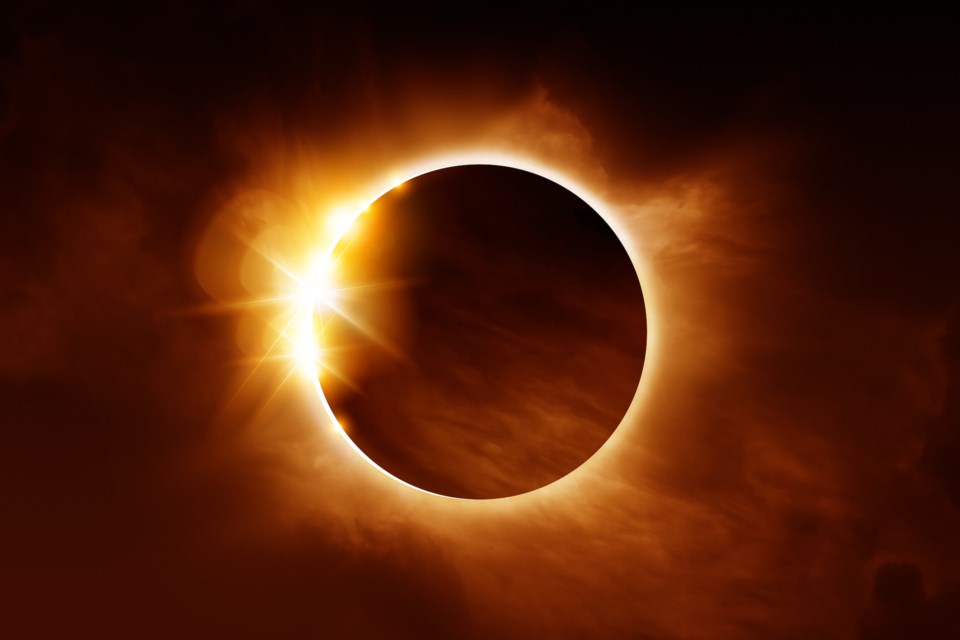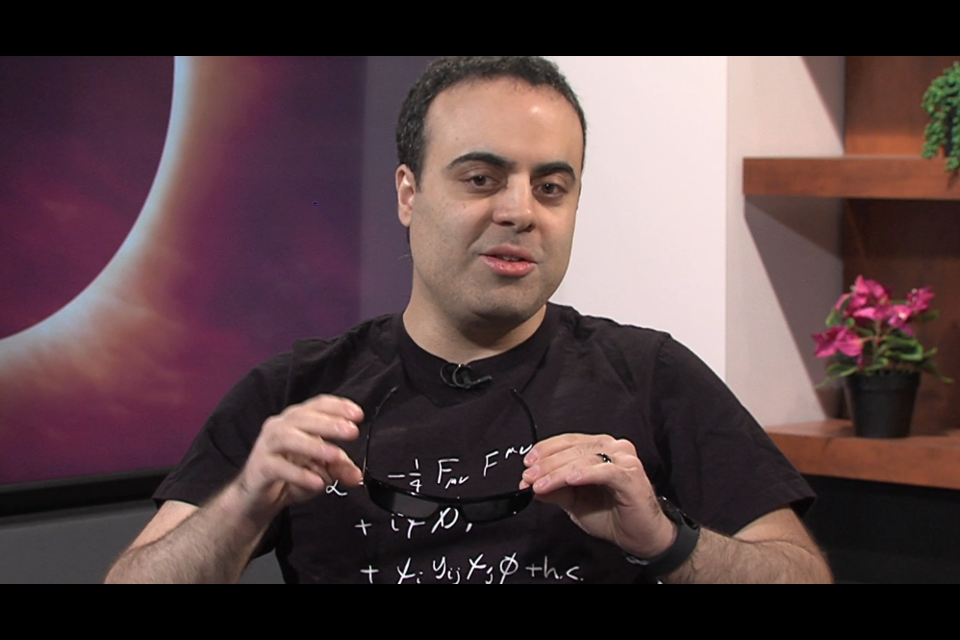All science aside, Dr. Barak Shoshany, an assistant professor of physics at Brock, is excited to experience his first total eclipse in Niagara on April 8.
Shoshany is one of the university’s representatives on the Ontario Eclipse Task Force, who have been gathering to discuss education and help municipalities plan for the event that is expected to draw hundreds of thousands of visitors to the region.
In a sit-down for YourTV recently, Shoshanny said he had only experienced partial eclipses before, once in Israel and again in 2017 during his PhD studies at the University of Waterloo.
“It’s going to be an amazing experience,” said Shoshany. “But ultimately, understanding the science and the history behind it makes it all the more special.”
In ancient times an eclipse may have been seen as a bad omen, he suggested. Many saw the sun as a god.
“That made sense,” said Shoshany, “because the sun gives us warmth and light. But when the sun disappeared, they thought the god was angry with them.”
But in the 1600s, the scientific revolution debunked that myth. Influenced by the work of those who came before him, including Copernicus, Kepler, Descartes and even Aristotle, Isaac Newton developed his three laws of motion.
In 2024, scientists such as Shoshany still turn to Newton’s laws of gravity as well as Einstein’s theory of general relativity to study the universe. And to make predictions.
“We can measure lots of things in the solar system very precisely,” Shoshany explained. “The masses of all different celestial bodies, the planets, the moons and so on. We can measure their speeds, their exact orbits and how concentric their orbit is, whether it’s like a circle or elliptical.”
All the data, he added, is easily entered into a computer, making it possible to predict when every solar eclipse is going to happen over the next couple of hundred years, with a precision to the exact second.
It’s a lot of mathematics, of course. The sun is about 400 times larger than the moon and also approximately 400 times farther away from the earth. The orbital path of the moon around the earth affects whether or not an eclipse happens at all when the moon is lined up with the sun.
As Penn State department of astronomy & astrophysics teaching professor Christopher Palma wrote in The Conversation in an article for The Local’s parent company, Village Media, “The moon’s orbit is tilted by about 5 degrees compared with earth’s orbit around the sun. This tilt means that sometimes the moon is too high and its shadow passes above the earth, and sometimes the moon is too low and its shadow passes below the earth. An eclipse happens only when the moon is positioned just right and its shadow lands on the earth.”
The mathematical comparison between the orbits of both the moon and the earth is what allows scientists to pinpoint the time and location of each eclipse.
“This eclipse, we actually knew already years ago, the exact second it was going to happen, when the partial eclipse will happen, when totality will start, and so on,” he added.
Shoshany adds that the moon is not a perfect sphere. Like earth, it has mountains and valleys. That’s what causes such a spectacular vision just seconds before the sun is fully covered.
“When there is still a sliver of sun that is not quite covered,” Shoshany explained, “the light passes through these valleys on the side of the moon. That’s why we see these individual beads of light shining through the valley.”
Eventually, there is just one set of beads, giving what Shoshany referred to as the diamond ring effect, similar to the image that accompanies this news article.

We see the sun’s corona, the light all around it, with the last beads, what we call Bailey’s Beads (named for astronomer Francis Baily, who explained the effects in 1836), which look like a diamond on a ring.”
Shoshany will be explaining a lot of this to visitors to Brock University on the day on April 8. That day Brock is holding Eclipse on the Escarpment, a special event beginning at noon that is open to the public and free of charge.
Educational exhibits and demonstrations led by researchers, professors and experts in biology, chemistry, computer science, earth sciences, English language, literature and physics will be set up in the Ian Beddis Gymnasium.
With the totality of the eclipse expected to occur between 3:18 p.m. and 3:21 p.m., the public will be invited to file onto Alumni Field to experience the event safely alongside Shoshany and other Brock professors and staff and with the help of pinhole projectors, solar telescopes and complimentary certified eclipse glasses.
“We’re going to live stream the eclipse on YouTube,” added Shoshany. “We’re going to join up with several universities and organizations across Canada for that. It basically starts with us because we’re in the path of totality.”
Though Eclipse on the Escarpment is free, Brock is asking that participants register ahead of time on their website.
Like others, Shoshany warns that wherever you view the eclipse next month, you do so safely.
“Lots of people think when the sun is covered partially by the moon that it’s safe to look at it,” he warns, “but it’s never safe to look directly at the sun, unless you have solar glasses that are ISO 12312-2 certified. And keep them on at all times.”
In addition to being a reporter for The Local, Mike Balsom is also the host of The Source on YourTV Niagara. On April 8 he will be hosting YourTV’s live coverage of the total eclipse, beginning at 2 p.m. from Niagara Falls.
Other ECLIPSE 2024 articles in the NOTL Local:
St. Davids students take a trip to the moon
Provincial task force has been key in preparing for the eclipse
Whether through special glasses or a colander, watch it safely
Niagara police and emergency services getting ready for biggest crowd ever
